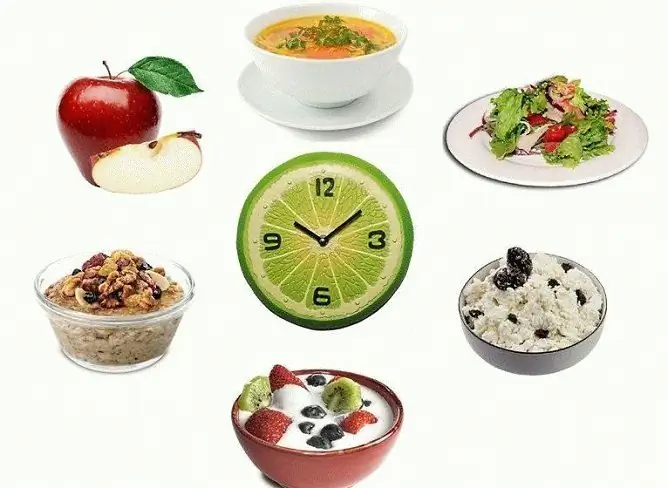- Author Rachel Wainwright [email protected].
- Public 2023-12-15 07:39.
- Last modified 2025-11-02 20:14.
7 delicacies that are dangerous to eat
Traveling around the world, many try to taste the most exotic dishes of national cuisines. There is even the so-called gastronomic tourism, which, according to gourmets, allows you to get new sensations and is able to show the life of other peoples from a completely unexpected side.
Unfortunately, this way of knowing the world is not so safe: exotic dishes can not only bring pleasure, but also cause irreparable harm to health. Some products are so dubious from the point of view of doctors that the authorities of several countries have banned their free sale. We offer TOP-7 of such dishes to your attention.
Kopalchen
A dish of the national cuisine of the northern peoples (Chukchi, Nenets, Eskimos, Khanty). It is raw meat of deer, walrus, seal, whale, duck, other animal or bird, subjected to a long fermentation process under pressure and without access to air. The Chukchi version, for example, is done like this: the carcass of a deer is immersed in a swamp, pressing down with branches, peat and stones. The dish is considered ready after a few months.
The meat that has undergone such processing contains a complex of toxic substances, colloquially called cadaveric poison. It causes vomiting, diarrhea, profuse salivation, respiratory depression and seizures. The likelihood of dying from severe poisoning is very high for anyone who has not been accustomed to such food since childhood. Of course, not a single store or restaurant offers kopalchen to its customers, but an unwary tourist who is tempted by the offer of hospitable locals and decides to taste such an exotic product really risks his life.

Source: depositphotos.com
Italian rotten cheese casu marzu
A special kind of soft cheese, which has been made since ancient times in several regions of Italy (especially common on the island of Sardinia). The specificity of the production of this delicacy requires that fresh pecorino cheese be populated with cheese fly eggs. The infected heads are kept at a certain temperature and humidity until the larvae that have appeared begin to eat the cheese mass, saturating it with the products of their vital activity. A delicacy is considered ready when the inside of the heads becomes soft and mixes with the escaping liquid. Casu marzu is eaten with Sardinian bread and strong wine, and the larvae, as a rule, are also used as food.
The danger of eating rotten cheese is not only associated with a high risk of allergic reactions. Cheese fly larvae are not always digested in the stomach and can enter the intestines alive. In such cases, they behave very aggressively: they damage the intestinal walls, provoking the development of bloody diarrhea, vomiting, abdominal pain and other complications. In addition, lovers of exotic dishes may suffer directly in the process of tasting kasu marzu: overly active worms are so jumpy that they get into people's eyes. However, this feature, according to local residents, indicates that the degree of decomposition of cheese is safe for humans: in Sardinia, it is believed that larvae die in an environment containing toxins.
Kasu marzu cheese is not found in stores, but the Italian authorities failed to completely ban its sale. In 2010 this delicacy was recognized as part of the cultural heritage of Sardinia. Now it is produced by some farmers living in the north of the country (as a rule, according to preliminary personal orders).

Source: depositphotos.com
Fugu
Contrary to popular belief, the word "fugu" is not the name of the fish, but the dish that is made from it. Fish of the puffer family (most often the brown puffer), living in the coastal parts of the Indian and Pacific Ocean, are used to make the delicacy. The skin and internal organs of these fish contain the most dangerous poison of nerve action - tetrodotoxin. In every small fish, this toxin is enough to kill about 40 people. Death occurs due to paralysis of the respiratory muscles. There is no antidote that can neutralize the effect of the poison. A lover of delicacies can only rely on urgent hospitalization and connection to a ventilator: in this case, there is a possibility that the poison will eventually leave the body.
Although several dozen people die every year from blowfish puffer in the world, in Japan the dish is quite officially present on the menu of many restaurants. It can only be prepared by a chef who has completed a two-year training course, passed an exam and received a corresponding certificate. Foreigners do not often take the risk of trying the delicacy, but among the Japanese it is very popular, despite the high cost. Amateurs say that puffer meat has an unforgettable taste, and raw fugu (also boiled and fried) causes pleasant relaxation and slight euphoria. Doctors believe that this effect may be due to microscopic amounts of tetrodotoxin remaining in fish after proper cutting.

Source: depositphotos.com
Absinthe
This strong drink, consisting of ethyl alcohol (in the classic version - more than 70%) and extracts of herbs (chamomile, hyssop, angelica, ash, mint, calamus, lemon balm, fennel, anise, licorice, coriander, parsley and bitter wormwood), was invented as a medicine and was actually used in the first half of the 19th century to protect French soldiers from tropical diseases in colonial wars. He later became the subject of a craze in many European countries and the United States.
The danger of using absinthe is associated with the presence in its composition of an extract of bitter wormwood, containing thujone, a poisonous substance that has an exciting and hallucinogenic effect. In combination with alcohol, a quick and very unpleasant effect is obtained: a person becomes irritable, shows unmotivated and uncontrolled aggression. Regular intake of the drink leads to the development of depression and psychosis. The fear that the spread of absinthe would lead to fatal consequences for the gene pool led to the ban on its production and use in Italy, the USA, Germany, Switzerland, Belgium, Bulgaria and France. The restriction existed until the 80s of the twentieth century. Now in most countries, it is allowed to sell this drink and cocktails that contain it, provided that the proportion of thujone in absinthe does not exceed 10 mg / kg.

Source: depositphotos.com
French brie cheese
One of the most famous and popular soft cheeses. Made from cow's milk. In the process of maturation, the heads become covered with a specific white mold, which also goes into food. There are now many varieties of brie produced not only in the central regions of France (where it was invented), but also in other European countries.
By itself, this cheese is not only not dangerous, but even healthy, and its taste (in the opinion of experts) is extremely original and pleasant. The problem is that the product goes bad very quickly. Therefore, brie can be considered safe only if it is purchased in the same place where it is made. In addition, when eating brie cheese, infection with listeriosis is not excluded, since the raw material for its preparation is unpasteurized milk.

Source: depositphotos.com
Sassafras
The leaves of this plant, otherwise known as American laurel, have long been used as a condiment and for making drinks. The North American Indians believed that sassafras had an analgesic effect.
In the middle of the twentieth century, scientists found that sassafras leaves contain safrole, which is a strong carcinogen. Now the use of this plant for culinary purposes is prohibited.

Source: depositphotos.com
Haggis
A national dish that has enjoyed immense popularity in Scotland for centuries. Prepared from mutton giblets, boiled in a shell made from a cleaned stomach. Haggis is a traditional part of the holiday treat, which is served annually on the birthday of the famous poet Robert Burns (January 25), who praised this dish in his poetry and is highly revered by the Scots.
Apparently, in the era of the great bard, people had no idea about such a disease as mad cow disease. In 1989, the US authorities banned the inclusion of haggis on restaurant menus for fear that lamb guts could become a source of this dangerous infection. However, the Scots love for the famous national delicacy has not diminished in the least: in the homeland of Burns, haggis is still sold in all restaurants and shops.

Source: depositphotos.com
It is useful and pleasant to get acquainted with the cuisine of different nations. Subject to elementary care, this may well become a source of new impressions without any harm to health.
YouTube video related to the article:

Maria Kulkes Medical journalist About the author
Education: First Moscow State Medical University named after I. M. Sechenov, specialty "General Medicine".
Found a mistake in the text? Select it and press Ctrl + Enter.






